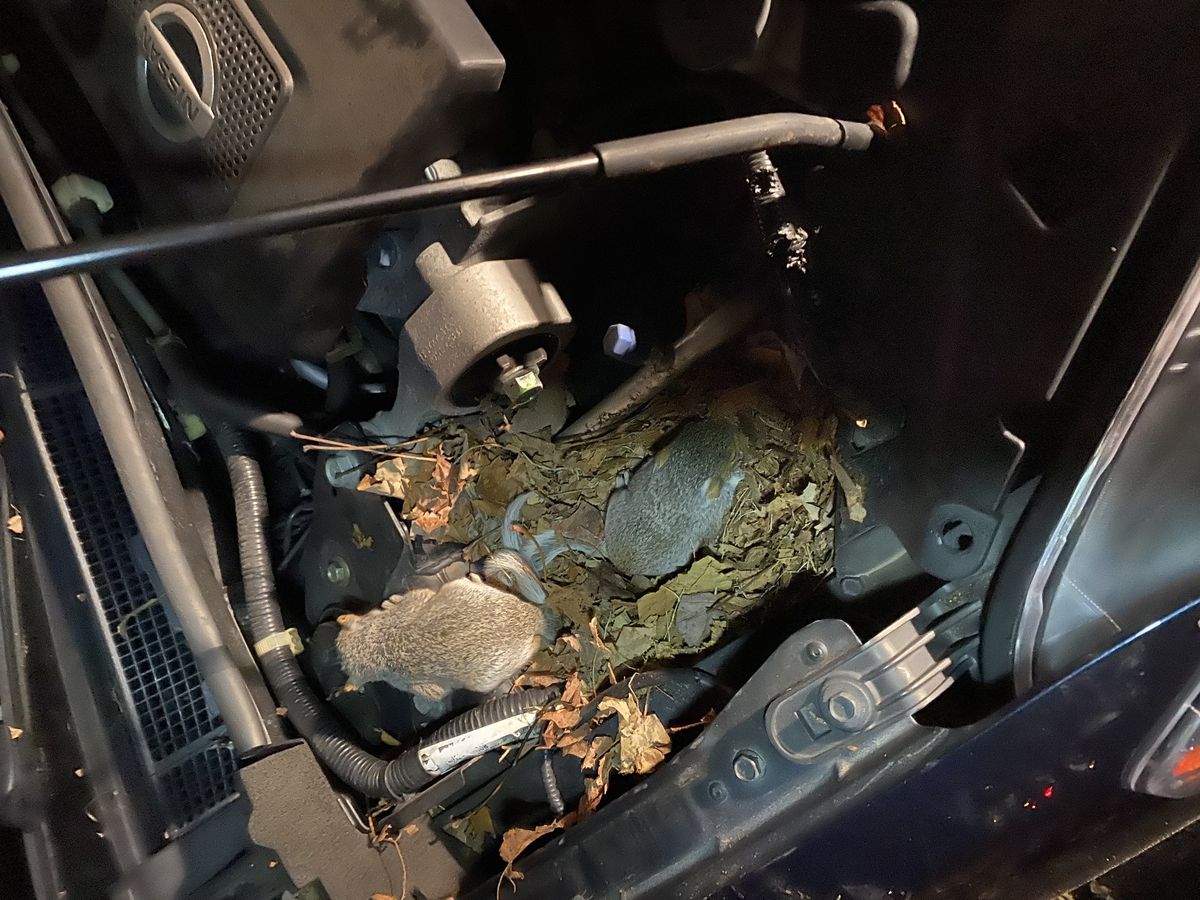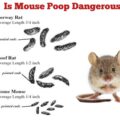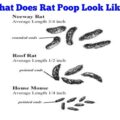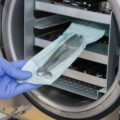Rodent-inflicted damage is an age-old problem that some observers say is increasing as automakers use more plant-based biodegradable materials to reduce waste. It turns out that rodents sharpening their teeth and feasting on cars is more prevalent than you might think. You can buy the most reliable car on Earth and still find convoluted electrical gremlins, fluid leaks, and even outright failure when rodents take up residence and begin chewing on wiring, hoses, plastic, and other critical car parts.
Another major source of concern is Hantavirus, a virus that is found in the urine, saliva, or droppings of infected deer mice and some other wild rodents (cotton rats, rice rats in the southeastern United States, and the white-footed mouse and the red-backed vole). It causes a rare but serious lung disease called Hantavirus pulmonary syndrome (HPS). The virus does not remain active for long once outside of its host — less than 1 week outdoors and a few hours when exposed to direct sunlight.
Where do rodents nest in cars?
Rodents nest in many different places in cars (and campers and trucks), which is a potential risk to anyone who uses the vehicle. They are more likely to nest in cars that aren’t used very often, but they can get inside any vehicle. Nests could be anywhere in the engine compartment, including the area under the windshield wipers, between the battery and the frame, the engine air filter, and near or in filter hoses and ducts of the vehicle’s passenger compartment air intake system (ventilation, heating, and air conditioning), including the cabin compartment air filter. In other areas of the car, rodents may nest in the trunk and inside the spare tire compartment, throughout the passenger compartment, and inside the tailgate and headlight enclosures. Rodents get in through rust holes, vents, and ducting.
What should I wear when I’m preparing to inspect my vehicle for rodent droppings and nests, and what equipment and materials do I need to clean up what I find?
Wear disposable plastic gloves and a long sleeve shirt. If you have evidence of rodents nesting in your vehicle, you’ll want to have a bleach solution that is 1 part bleach to 9 parts water. You may also use a commercial disinfectant. Have paper towels and a garbage bag ready as well.
Should I wear a mask?
A mask is not necessary if the infestation is not extensive. For extensive infestations with piles of feces or numerous nests or dead rodents present, special precautions are recommended. In these cases, consult a qualified mechanic or automotive professional for assistance. Additional detailed instructions on hantavirus prevention for extensive infestations may be found at this Morbidity and Mortality Weekly Report.
What do I do first?
Move the vehicle into the open air – out of the garage or carport. Open the hood, doors, and trunk and leave it to air out for 20 minutes. After 20 minutes have passed, open up the engine compartment.
What do I do if I see evidence of rodents in the engine compartment?
- Start by disconnecting the cables from the battery so that you don’t get shocked while cleaning up the compartment!
- Using your 1 part bleach to 9 part water solution (or a commercial disinfectant) spray the materials until fully soaked. Make sure the materials are really drenched.
- Let it sit for 5 minutes (or follow the manufacturer’s instructions for disinfection time).
- Then using your paper towels, pick up the material and throw everything away in the garbage bag.
- After you’ve thrown away the droppings and nesting materials, clean the rest of the area with additional disinfectant. Don’t reconnect the battery until the compartment is dry.
- Wash the gloves with disinfectant or soap. Take off the gloves, then wash your hands with soap and water.
What do I do if rodents get inside the air ducts or the vehicle’s air intake system?
Rodents can get inside the air duct system, crawl along it, and nest on the accordion-style air filter or even in the hoses and ducting leading directly to the passenger compartment. Clean as described above, with a 1:9 bleach-to-water solution or commercial disinfectant, wait 5 minutes, and then remove the materials. Throw away the old filter and replace it with a new one. Inspection, disinfection, and possible replacement of hoses, ductwork, other filters, fans, or other components of the system may be necessary if the rodent infestation is extensive: Consult a qualified mechanic or automotive professional for assistance. For extensive vehicle infestations, additional detailed instructions on hantavirus prevention may be found at this Morbidity and Mortality Weekly Report.
Should I use a vacuum cleaner or pressurized air?
No. Never sweep or use a vacuum cleaner, pressurized air, or high-powered sprayers to clean up rodent droppings and nests or contaminated areas until after you’ve soaked them in a 1:9 bleach-to-water solution or commercial disinfectant. This is because the dried droppings and urine containing the hantavirus particles can get into the air, making it easier to breathe in.
How do I clean other places in the car?
Just like for cleaning the engine, wear gloves and a long-sleeved shirt, soak with nesting materials and droppings with the 1:9 bleach-to-water solution or commercial disinfectant and let sit for 5 minutes before throwing away the materials in the garbage bag.
What do I do after I’ve inspected and cleaned up the vehicle?
Before taking off your gloves rinse your gloved hands in the disinfectant or 1:9 bleach-to-water solution. Pour some of the disinfectants into the garbage bag that has the paper towels and nests you’ve cleaned up. Seal the garbage bag. Rinse your gloved hands with water, take off the gloves, throw them away, and finish by washing your hands with soap and water.
What do I do if the rodents come back?
Do everything you can to prevent rodents from taking up residence in your vehicle (as well as your garage, shed, and house). Use snap traps as a first option. Live or sticky traps are not recommended. If you haven’t used the vehicle for a while, air it out and conduct an inspection of the air ducts and filters before starting the engine. SEE: How To Dispose Dead Rats
Where can I learn more about hantavirus?
Lots of information on hantavirus and cleaning up after a rodent infestation is available at:
- Public Health’s Hantavirus pulmonary syndrome page: http://www.kingcounty.gov/depts/health/communicable-diseases/disease-control/hantavirus.aspx
- CDC Rodent page: https://www.cdc.gov/rodents/index.html
- Detailed instructions at CDC Interim guidance for cleaning and disinfecting vehicles with rodent infestations: https://www.cdc.gov/rodents/cleaning/guidance-cleaning-vehicle.html
- Additional detailed instructions on hantavirus prevention may be found at the Morbidity and Mortality Weekly Report






